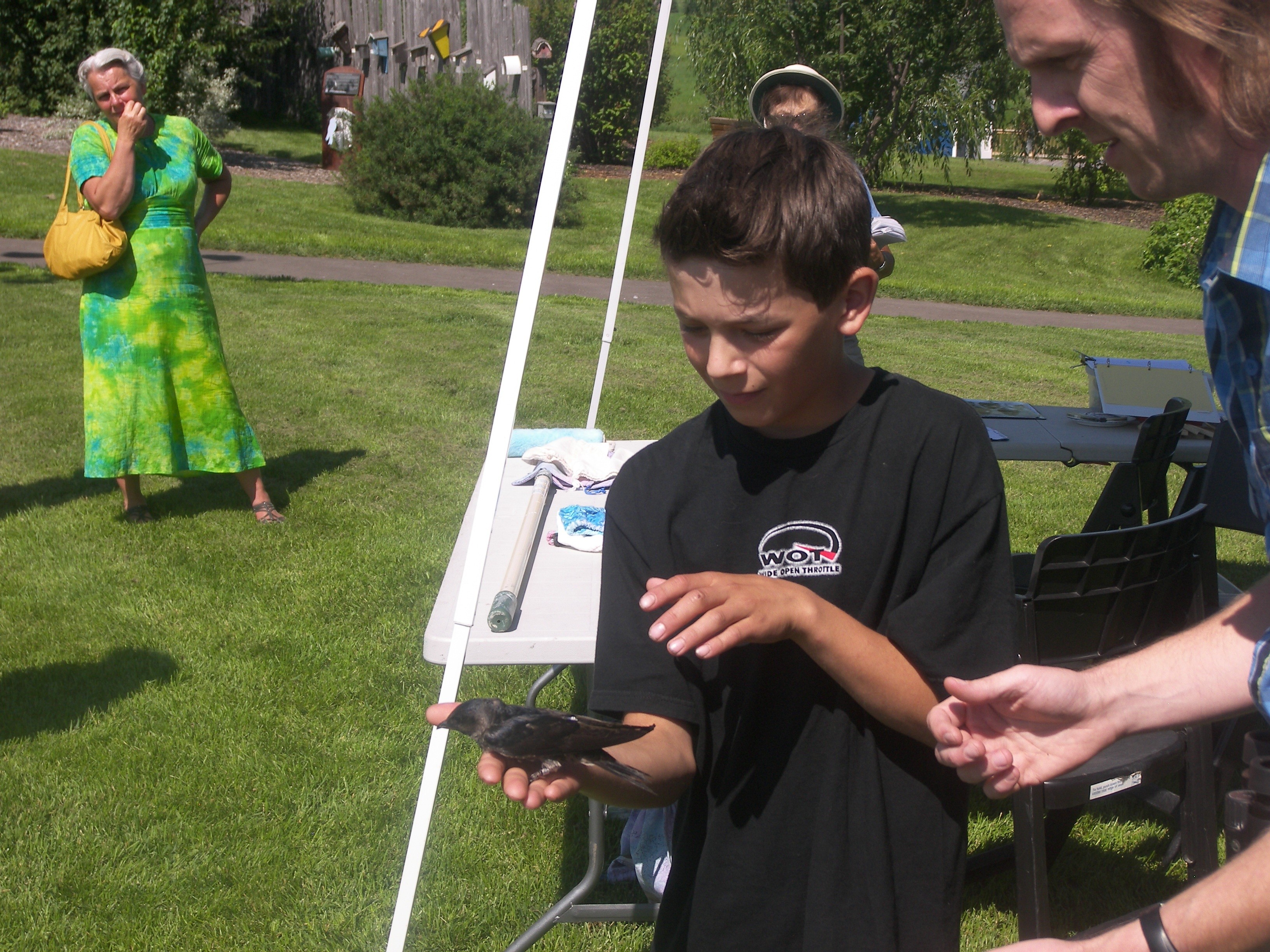Last year 22 purple martins nesting at the Ellis Bird Farm, located northeast of Red Deer near Joffre, were fitted with tiny geolocators to track their migration movements by satellite.
The information from these tiny electric gizmos is revealing amazing information about where and how far these birds (smaller than a robin) travel.
Myrna Pearman, biologist and site manager at the Farm, says, “This year we were lucky to retrieve four of those 22 birds here. Now we have a record of their entire journey for three of them (a dead battery made the fourth unusable) and it’s incredible.
“Amelia, the first one, left here on the 24th of August (2012) and went all the way down to Brazil. She flew 22,300 kilometres all told, rocketing back to the Ellis Bird Farm, leaving (Brazil) on the 24th of April (2013) and she made it back here in 21 days, averaging 600 kilometres a day. Absolutely incredible.”
Information from the other returning birds is equally fascinating.
Pearman said this is the first time geolocators are being used here.
Purple martins are at the northwestern edge of their range in Central Alberta and the research will help discover why the species is declining.
“Habitat loss (is a factor) and they think climate change is a major issue. The birds are genetically programmed to migrate at a certain time, but the insect flush (which the birds depend on when breeding) depends on temperature so by the time the martins arrive there’s not as much food.”
Dr. Kevin Fraser, from York University in Toronto, heads up the purple martin studies. He was at the Farm last week putting the tiny geolocators on more purple martins. The geolocators weigh about a gram and a half, usually less than 3% of the bird’s body weight.
“We’ve already learned that the purple martins here have to make the longest migration of any birds we’ve tracked, a 22,000 kilometre annual journey,” said Dr. Fraser.
“It’s hard to imagine something this small – purple martins weigh about 45 grams – going those distances,” he said.
“We’ve also found the birds here have a really long stop in the Yucatan (in Mexico), staying there about a month, to refuel and perhaps moult. That could be a really important place to protect this population (of purple martins). Some martin populations are in serious decline and we don’t know what’s causing that.”
The Ellis Bird Farm is better known for its mountain bluebirds than its purple martins, but their bluebird numbers are down.
The population was decimated after a major storm in 2008 and it hasn’t recovered locally, said Pearman.
But the annual Bluebird Festival is still planned for July 13.
“It starts at 11 a.m. with chili on a bun,” said Pearman. “And the whole day will be children’s activities, site tours, the Beaverhill Bird Observatory will be here banding birds, live music from Jazz Explosions, our blue feather award and Red Deer Centennial birthday cake. But we probably won’t do tours to the bluebird boxes, because their numbers are down and we don’t want to bother them.”
She describes the Ellis Bird Farm as one of Alberta’s best kept secrets.
“It’s a wonderful little gem, a great place to escape the hectic city life. Our teahouse has fabulous food, the site is beautiful and there’s lots of stuff for kids to do. It’s a wonderful place.”
Charlie Ellis put up his first bird box on his front lawn in what is now the Ellis Bird Farm in the spring of 1955.
Tree swallows set up housekeeping but a pair of house sparrows took over the box, killing the female swallow and building a nest on top of her and her dead nestlings.
That outraged Ellis and he built more boxes for native birds like tree swallows and mountain bluebirds, while trying to control the destructive house sparrows.
In a few years he had 300 houses and was especially happy with the number of bluebirds. There was one pair in 1956; by the 1970s he had more than 70 nesting pairs and it was thought to be the highest known concentration of breeding bluebirds anywhere.
With his sister Winnie he negotiated with Union Carbide (now MEGlobal) in 1980 to sell them his land with the understanding that the birds would be protected (thus the Ellis Bird Farm was born) and they could live there for the rest of their lives.
Charlie died in 1990 and Winnie in 1904, but the Ellis Bird Farm is still going strong, taking an active role in international bird research.
acryderman@reddeerexpress.com



